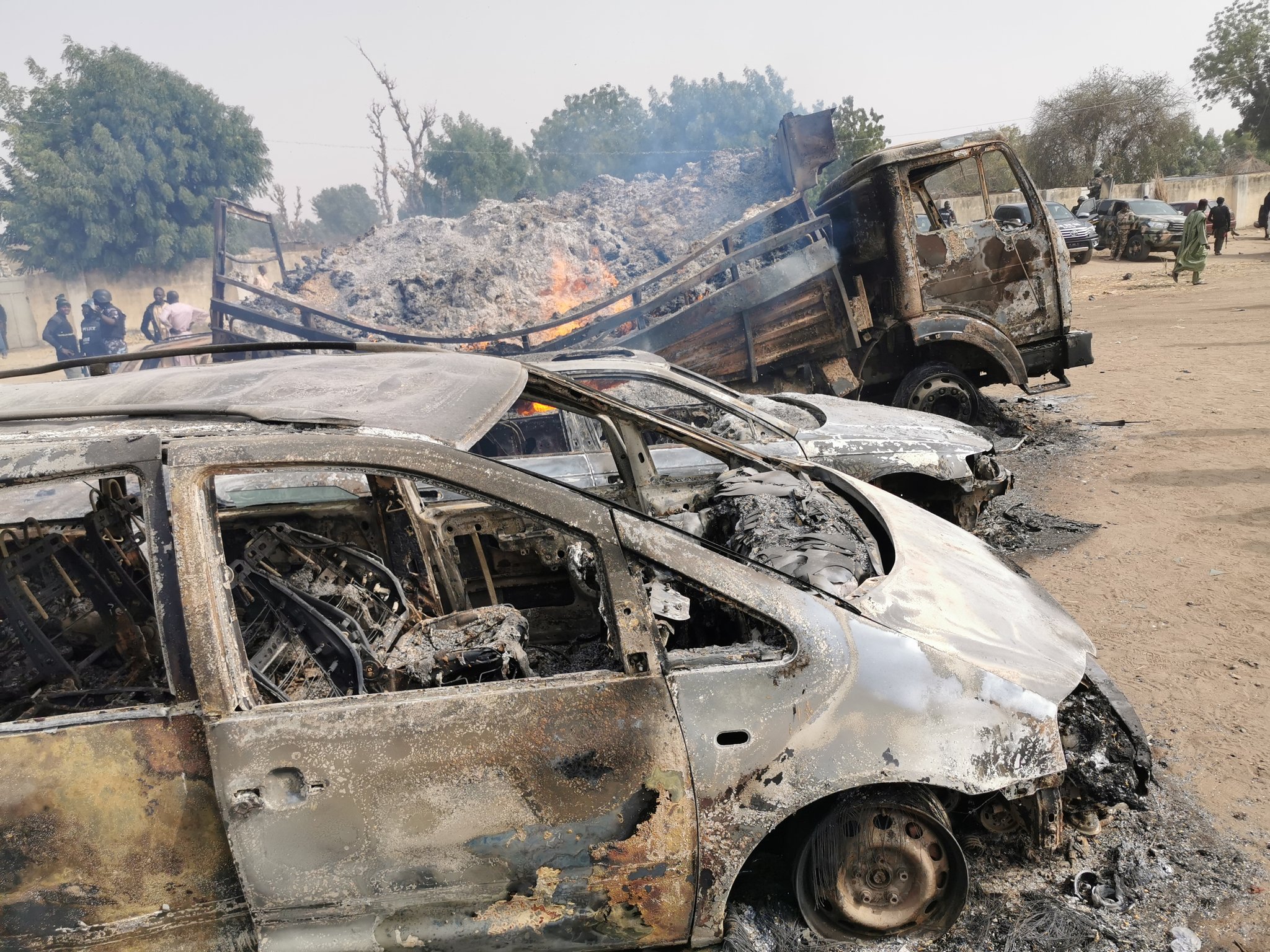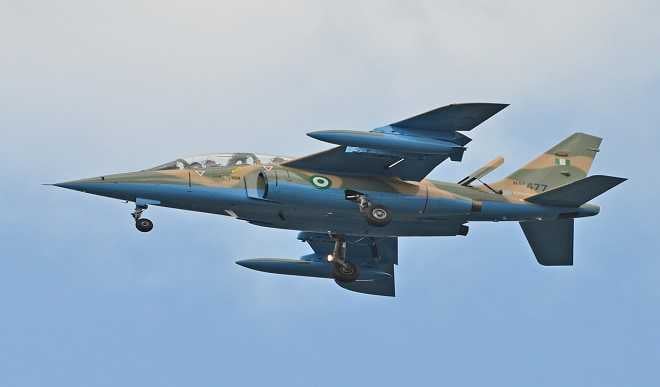Some residents of Garkida, Adamawa state and Korongilum, Borno state, have alleged that Nigerian air force (NAF) fighter jets refused to open fire on suspected Boko Haram insurgents when they attacked their communities.
Last Tuesday, the insurgents attacked Koriongilum burning many houses, and three days later, they attacked Garkida killing many people.
Some residents who spoke with TheCable at the weekend said NAF authorities were informed on time about the attacks but that they did not know why the insurgents were allowed to have their way while air force fighter jets hovered above them.
“We spotted the insurgents hours before they came into Korongilum, and immediately, we informed the nearest army battalion which is in Chibok,” one of the residents said.
Advertisement
“It appeared that the army would need help and they called the air force for air support. The insurgents were already in town, and when we saw air force jets we were happy. The insurgents carried on with the attacks and didn’t leave until after three hours. While they were at it, air force jets just kept hovering and not a shot was fired.
“The insurgents, right there under the hovering guns of the air force drove out unchallenged in a convoy of about 17 trucks.”
The residents of Garkida also accused air force of doing nothing to stop the insurgents when they attacked them.
Advertisement
“While we ran to hide inside the rocks, we saw air force jets coming and we started monitoring them,” one of the residents said.
“Air support is meant to come from Yola, and indeed they came on time, but we did not hear them fire or bomb the insurgents. The insurgents came in large numbers and they were operating in the open when NAF could clearly see them and engage.”
Another resident said: “At a point, we started asking ourselves if the jets were those of the air force or the insurgents, because how could the insurgents operate that freely? Are we saying the air force couldn’t see them moving in their large numbers? Please, we need help. We need to understand what’s happening.”
A senior army officer, who does not want to be named, said the fight would have been easy for the troops on the ground with the support of air force.
Advertisement
The officer said they provided enough information for air force to engage the insurgents, but that they claimed no targets were on sight.
“The approach to this fight is intelligence driven, and the air force actually stands the bigger chance to crush the enemies,” he told TheCable on Monday.
“During the attack in Garkida, the air force came. The army troops on the ground had shared intelligence on the exact location of the enemies, but we were shocked when the air force said they did not see anything.
“Even if they had shed just once, trust me, the enemies would have fled. I don’t really understand if the army is fighting a different war from what the air force is.”
Advertisement
The officer also said the air support was needed because the insurgents, with many gun trucks, outnumbered soldiers on the ground who had just one gun truck.
FEAR OF MISFIRING, LIKE IN RANN?
Advertisement
When contacted, Ibikunle Daramola, NAF spokesperson, told TheCable they could not engage the insurgents because the situation in Garkida was chaotic, and that they took the measure so they would not hit civilians.
In 2017, 126 civilians were killed in Rann, Borno state, in an accidental air strike by the military.
Advertisement
“There must be communication between the aircraft, which is thousands of feet in the air, and the ground elements so as to avoid collateral damage or attacking one’s own troops (fratricide),” Daramola said.
“As you may have come to know, the situation on the ground in Garkida on 21 February 2020 was extremely chaotic with significant movement in the general area that were indistinguishable from the air. The situation was worsened by the fact that the attack mostly took place at night. In such situations, the rules of engagement, as internationally known, is not to attack unless it is clear that no civilians are in harm’s way. The essence is to avoid the inadvertent killing of the people that the aircraft were dispatched to protect.
Advertisement
“It must be noted that the NAF ISR and attack aircraft remained airborne to provide support while seeking to de-conflict targets before engaging them; this was done outside the vicinity of the town in order to avoid killing any innocent civilians.
“Furthermore, as a follow-up, the Air Task Force of Operation LAFIYA DOLE, on 22/23 February 2020, carried out air strikes against terrorists’ hideouts at Parisu in the Sambisa general area of Borno state, where the Boko Haram elements that attacked Garkida were said to have originated. The battle damage assessment video of the attacks will be released, once declassified.”
Daramola added that NAF remains resolute in performing its function and that it shall continue to work in synergy with other security agencies to rid the country of insurgents.
Add a comment







